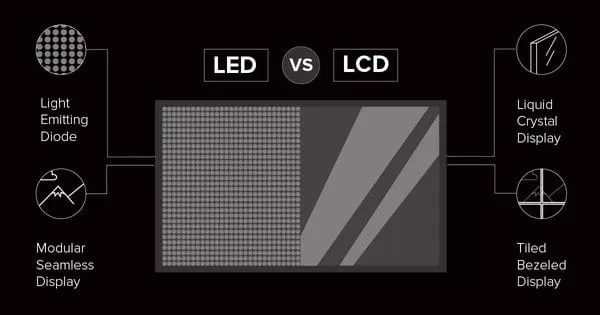Unlocking the Digital Clock: From Humble Beginnings to Ubiquitous Timekeeper
Delving into the World of Digital Clocks: A Journey Through Innovation and Practicality. What is a digital clock, really? Beyond just telling time, it's a testament to human ingenuity. Join us as we explore its history and contemporary uses. Ready to experience a sleek and customizable online clock? Discover it now at website.
Defining the Digital Clock: A Modern Marvel of Timekeeping
At its core, a digital clock presents time using numerical digits, offering a clear, immediate readout of hours, minutes, and often seconds. Unlike analog clocks with their sweeping hands, digital clocks provide a discrete and unambiguous display. But how does a digital clock actually work?

- Digital vs. Analog: A Fundamental Difference: The primary distinction lies in representation. Analog clocks rely on continuous movement, while digital displays use precise numerical values.
- Inside the Display: LEDs, LCDs, and More: Most digital clocks utilize LEDs (Light Emitting Diodes) or LCDs (Liquid Crystal Displays) to showcase the current time. More advanced displays might even use e-ink.
- Key Features and Functionality: Beyond simply telling time, many digital clocks offer alarms, timers, world time zones, and even temperature readings.
A Journey Through Time: Tracing the History of the Digital Clock
The digital clock history is a fascinating chronicle of technological advancement. From clunky vacuum tube contraptions to the streamlined microchip marvels we use today, the evolution is truly remarkable.

- Early Innovations: The Vacuum Tube Era: The earliest iterations of digital clocks relied on vacuum tubes, making them massive, energy-guzzling, and prohibitively expensive.
- The Transistor Revolution: A Leap Forward: The invention of the transistor ushered in an era of smaller, more reliable, and more affordable digital timekeeping.
- The Microchip Age: Ubiquity and Accessibility: Microchip technology further miniaturized digital clocks, leading to their widespread adoption and accessibility.
From Pixels to Perfection: The Evolution of Digital Displays
The technology behind how digital clocks display time has dramatically evolved. Early LED displays were prized for their brightness but were power-hungry. LCD technology offered a more energy-efficient alternative.

- LED Displays: Brightness and Visibility: Light Emitting Diodes offer exceptional visibility, especially in low-light conditions, but they consume a significant amount of energy.
- LCD Displays: Efficiency and Versatility: Liquid Crystal Displays offer superior energy efficiency and are commonly used in battery-powered devices.
- Beyond LEDs and LCDs: The Future of Displays: Emerging display technologies like OLED (Organic Light Emitting Diode) and e-ink promise even better contrast, energy efficiency, and readability.
Digital Clocks in Everyday Life: Applications Across the Board
Digital clocks are ubiquitous in the modern world, finding applications in nearly every facet of our daily lives.

- Digital Clocks in the Home Environment: From bedside alarm clocks to kitchen timers, digital clocks are indispensable household conveniences.
- Digital Clocks in the Workplace: Digital clocks are essential for maintaining schedules and ensuring productivity in professional settings.
- Digital Clocks in Public and Commercial Spaces: Transportation hubs, retail stores, and other public venues rely on digital clocks for displaying consistent and accurate time.
Taking Time Online: The Rise of Web-Based Digital Clocks
The internet has transformed how we interact with time, and online clocks have become increasingly popular. They offer convenience, accessibility, and a wide array of customization options. Check out our digital clock at digitalclock.org for a seamless timekeeping experience.
- The Advantages of Online Digital Clocks: Access them from any device with an internet connection, making them incredibly versatile.
- Personalization and Customization: Tailor the display to your preferences with various font styles, colors, and layouts.
- Ensuring Accuracy: Network Time Protocols: Web-based digital clocks rely on Network Time Protocols (NTP) to maintain synchronization with atomic clocks, ensuring accurate time.
Why Does Accurate Time Matter? The Importance of Precision
Accurate time is critical in countless aspects of modern society. From scientific research to financial markets, precision is key. How important is accurate timekeeping in the digital age? It's more vital than ever.
- Time in Scientific Research and Experimentation: Precise time measurements are essential for conducting accurate scientific research.
- Time in Business, Finance, and Global Trade: Financial markets and global trade rely on synchronized time for transactions, logistics, and communication.
- Time in Daily Life: Scheduling, Coordination, and More: Accurate time allows us to schedule our day, coordinate with others, and manage our lives efficiently.
In Conclusion: The Enduring Significance of Digital Clocks
From their complex beginnings to their modern, streamlined forms, digital clocks have revolutionized the way we perceive and interact with time. Their simplicity, accuracy, and versatility make them an indispensable tool for navigating the complexities of modern life.
FAQ: Answering Your Burning Questions About Digital Clocks
What's the difference between a digital clock and an analog clock?
Digital clocks display time numerically, while analog clocks use hands to indicate the time.
Just how accurate is a digital clock, really?
Modern digital clocks are remarkably precise, especially those that synchronize with network time protocols.
Where can I access a digital clock online?
You can find a variety of customizable digital clocks on our website.
Can you explain the inner workings of a digital clock?
Digital clocks utilize electronic circuits to count time and display it numerically via LEDs or LCDs.